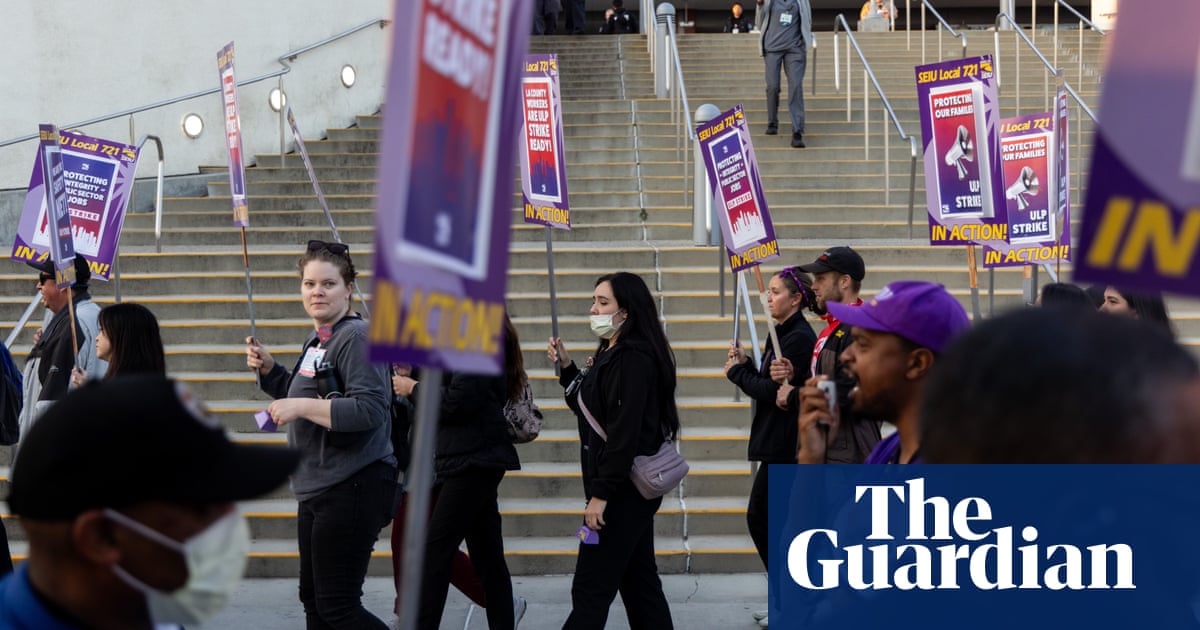Humans have long glamorized suffering, hailing it as an essential ingredient of growth. In the ancient Greek tragedy Elektra, Sophocles wrote: “Nothing truly succeeds without pain.” In the 1980s, the actor and aerobics instructor Jane Fonda told people: “No pain, no gain.”
But when it comes to workouts, how much pain – specifically, how much post-workout soreness – is actually a good thing? The answer: it depends.
“It’s not terrible if you become sore,” says Dr Michele Bird, a clinical assistant professor of applied exercise science at the University of Michigan School of Kinesiology, but soreness “is not required to maintain our overall fitness level”.
So how sore is too sore? We asked experts.
What is muscle soreness?
Muscle soreness after a workout is also known as delayed onset muscle soreness, or Doms.
Doms usually sets in 12 to 24 hours after a workout, says Bird. It feels like a dull achiness within the muscle. If the pain is sharp, or centered around a joint, that is probably not muscle soreness but something potentially more serious, says Bird.
It’s not exactly clear what causes muscle soreness, says Dr Sarah Kuzmiak-Glancy, an assistant professor of kinesiology at the University of Maryland. Right now, she says, there is a general consensus within the medical community that the soreness we feel after a workout is a result of the body’s repair mechanisms.
“When you do a workout, specifically resistance exercise – though also aerobic exercise to a degree – what you do is damage the muscle cells and connective tissue,” Kuzmiak-Glancy explains. As the body repairs this damage, it results in hypertrophy, or an increase in the size of muscle cells. This repair process can lead to soreness, which may be a result of inflammation that takes place while the body heals.
Whatever causes Doms, it’s not lactic acid, she says.
But what about all the PE teachers who said soreness was the result of lactic acid buildup in the muscle? “We have to kill this myth,” Kuzmiak-Glancy says. Lactic acid is an important chemical that the body uses to fuel muscles with oxygen. While it may be responsible for pain that occurs in the midst of exertion – the burn on your last three biceps curls, for example – it is generally metabolized and gone from the bloodstream within an hour.
Is it good to be sore after a workout?
It depends on who you are and what your goals are.
There are times when one might want to push their physical limits, Bird says – maybe you’re trying to win a competition or achieve a personal record. Soreness after a workout like that is to be expected. But not every workout can or should be that intense.
“One of the most common mistakes we make is that we keep trying to make personal bests each time we work out,” Bird says. Instead, vary the type of exercise you do and the intensity of your workout – that way, the body has time to recover.
You are more likely to be sore when you first start a new type of workout that moves your body in ways your muscles are not accustomed to moving.
“Soreness is your muscles learning something new,” says Jessie Diaz-Herrera, a certified fitness instructor and co-founder of Power Plus Wellness.
Diaz-Herrera says that while some people “associate soreness with doing a good job”, others may already struggle with chronic pain and want to avoid any additional discomfort.
“We don’t want to exacerbate that pain,” Diaz-Herrera says.
Diet culture – which emphasizes appearance and control, and does not take mental and emotional wellbeing into account – has co-opted much of fitness culture, Diaz-Herrera argues. “In reality, exercise is supposed to help our longevity,” she says. “Our goal is to make sure we can functionally live better every day.”
Soreness isn’t necessary for that, she says. If you want to avoid Doms, Diaz-Herrera suggests measuring the success of your workout by asking yourself questions like: do I feel energized? Happy? Less stressed?
And something is better than nothing, experts say. “Every contraction of your muscle is better than no contraction,” says Kuzmiak-Glancy.
after newsletter promotion
How sore is too sore?
If your mobility is severely limited in the days after a workout, you’ve probably overdone it.
“If you can’t get food to your mouth because your triceps are too sore so you can’t bend your arm all the way, or you feel like you can’t lower yourself on to the toilet with control because you went too hard on legs the day before, that’s probably too sore,” says Kuzmiak-Glancy.
Additionally, if Doms lasts longer than three days, “we’ve probably pushed well past our limits”, Bird says.
Generally, it’s fine to exercise when you’re feeling a little sore, experts say. But exercising when you are experiencing excessive soreness puts you at risk for injury like muscle strain or joint injuries, says Kuzmiak-Glancy.
Not only that, you won’t be able to progress meaningfully in your workouts because “you’re not setting your body up in a way to perform optimally”, Kuzmiak-Glancy.
If you’re extremely sore, it’s important to give your muscles time to rest and recover. You can also engage in gentle movement like stretching or walking. “The best thing you can do for your body is continually moving your body,” says Diaz-Herrera.
How do you prevent excessive soreness?
First, make sure your body is adequately prepared and has enough fuel and water to make it through a workout, and to recover after.
“If we’re dehydrated, we will definitely be sore,” says Diaz-Herrera.
If you’re going into a high-intensity workout, eating some carbs beforehand can be helpful, Diaz-Herrera says. And protein after a workout is important to help your muscles recover. “That could look like a peanut butter and jelly sandwich, or hummus and pretzels,” she says.
An effective training plan that builds “day to day, week to week with slow, progressive increases” can also help mitigate Doms, Bird says. This also means only increasing one variable at a time – bumping up either speed or distance when running, for example, or only weight or reps during weight training.
Training different muscle groups on different days can also prevent overexercising any single muscle.
“I don’t work out the same muscle group two days in a row,” Kuzmiak-Glancy says. “So maybe I’m going to the gym seven days a week, but I only do biceps one day a week.”
If you are sore after exercising, massages, foam rolling and light yoga can help muscles recover. But the best way to recover is to stick to the basics, Bird says: good nutrition, adequate sleep and managing your stress.

 5 hours ago
5
5 hours ago
5













































